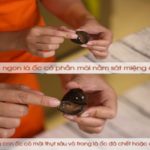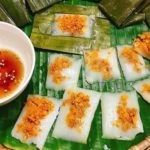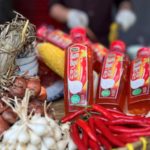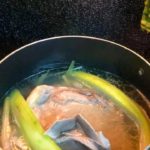Banh khoai, or Banh Khoai, is a renowned specialty in the Central provinces of Vietnam. But what is Banh Khoai, and how do you distinguish it from Banh Xeo? Let’s delve into this unique dish and explore the differences between these two delectable Vietnamese pancakes.
1 What is Banh Khoai?
 What is Banh Khoai, and where is it from?
What is Banh Khoai, and where is it from?
Banh Khoai is a round, fried pancake, similar in shape to Banh Xeo. It is commonly served with and .
The name Banh Khoai has an interesting origin. It is said that the name comes from the way the people of Hue, a city in Central Vietnam, pronounce the word “smoke.” The story goes that while cooking this pancake over a charcoal fire, the fire would sometimes go out, and smoke would rise. Thus, it was named “banh khoi,” or “smoke cake.” Over time, with the accent of the Hue people, it became known as Banh Khoai.
 Banh Khoai is a specialty of Central Vietnam.
Banh Khoai is a specialty of Central Vietnam.
Banh Khoai is native to the Central region of Vietnam, with its roots in Hue. However, it is a dish that people throughout the Central provinces know how to make and enjoy.
If you want to indulge in delicious Banh Khoai, you don’t have to limit yourself to Hue. You can find this treat in other Central provinces, such as Thanh Hoa, Ninh Binh, Quang Nam, and Quang Ngai. Each region may have its own unique twist on the dipping sauce, so you can expect a slightly different experience with each location.
2 How is Banh Khoai Different from Banh Xeo?
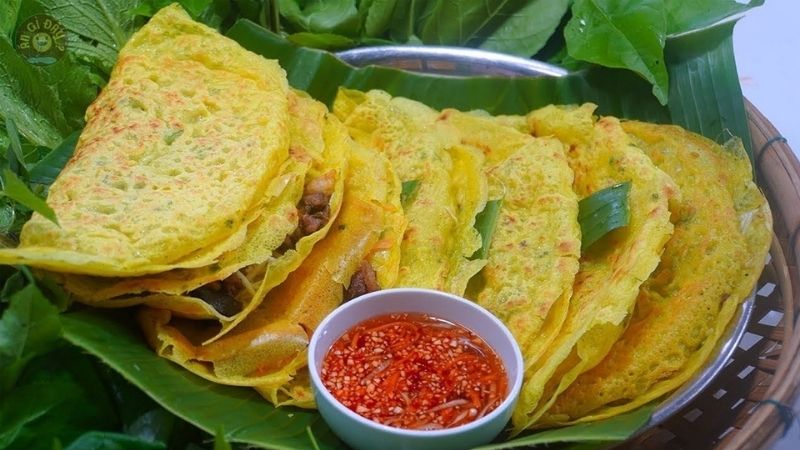 What sets Banh Khoai apart from Banh Xeo?
What sets Banh Khoai apart from Banh Xeo?
At first glance, Banh Khoai and Banh Xeo may appear similar due to their shared pancake-like appearance. However, these two dishes originate from different regions and possess distinct characteristics.
Banh Khoai is a fried rice flour pancake from Hue, prepared similarly to Banh Xeo. However, it is round, cooked in a mold, and typically filled with , , and on top. It is often accompanied by fresh herbs and a thick, slightly nutty dipping sauce.
 Banh Khoai is served with a thick, nutty dipping sauce.
Banh Khoai is served with a thick, nutty dipping sauce.
In contrast, Banh Xeo has several notable differences. It is larger, thinner, and has a much wider diameter than Banh Khoai. The filling for Banh Xeo also includes similar ingredients, such as shelled shrimp, , bean sprouts, and sausage. Additionally, Banh Xeo includes , with shells left intact, cooked until soft.
 Banh Xeo has a larger, thinner pancake.
Banh Xeo has a larger, thinner pancake.
Another distinction lies in the batter. Banh Khoai’s batter usually includes red yeast rice, which adds a fluffy texture and a unique color. On the other hand, Banh Xeo’s batter often contains for color and fragrance. The dipping sauces also differ—Banh Khoai is paired with a thick sauce, while Banh Xeo is typically enjoyed with .
So, there you have it! Now you know the differences between Banh Khoai and Banh Xeo. Both are delicious and showcase the unique regional specialties of Vietnam. Be sure to try both and savor the distinct flavors each has to offer.


























